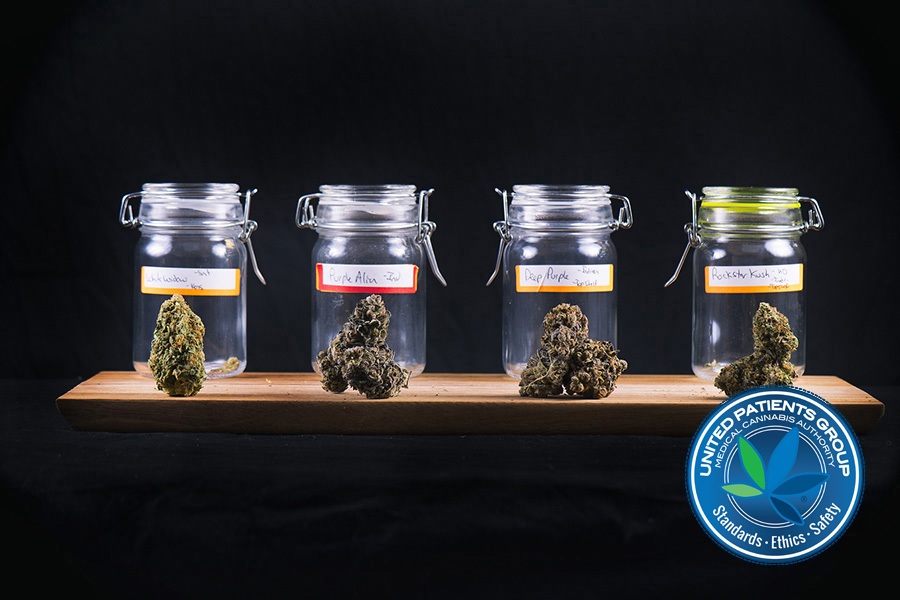Article Topics
Introduction
The endocannabinoid system (ECS) is a group of cannabinoid receptors located throughout the body, but particularly in the brain and central nervous system, that interact with cannabis compounds. This system plays an important role in maintaining homeostasis by regulating relaxation, eating, sleeping, certain inflammation responses and even cognitive function.
Cannabinoid receptors, located throughout the body, are part of the endocannabinoid system, which is involved in a variety of physiological processes including appetite, pain-sensation, mood and memory.
The endocannabinoid system consists of two types of cannabinoid receptors (CB1 and CB2), endogenous ligands (endocannabinoids) that bind to these receptors (anandamide and 2-arachidonoylglycerol) as well as enzymes involved in their synthesis and degradation. These enzymes produce and degrade these compounds; transporters for transporting them across cell membranes; and other molecules involved in their metabolism. There are two main types of cannabinoid receptor: CB1 receptors are found primarily in the brain and central nervous system while CB2 receptors are more prevalent outside of this area — including on immune cells that help regulate inflammation responses throughout your body.
There are two major cannabinoid receptors: CB1 and CB2.
There are two major cannabinoid receptors: CB1 and CB2.
CB1 receptors are found predominantly in the brain and central nervous system, where they play a role in regulating mood (including depression), memory, and pain perception. They’re also involved with movement disorders like Parkinson’s disease as well as nausea and vomiting associated with cancer chemotherapy treatment or other causes of illness.
- CB1 receptors are found predominantly in the brain and central nervous system. They are also present at low levels throughout the body, including on cells of the immune system.
- In humans, CB1 receptors can be found in many areas of the brain and spinal cord, including: hippocampus; cerebral cortex (outer layer) of each hemisphere of cerebrum; basal ganglia (clusters of nerve cells deep within brain); cerebellum (back portion behind brain stem).
CB2 receptors are more prevalent outside of the central nervous system, most prominently in blood cells and their precursors as well as in the tonsils (i.e., lymphoid tissue), tonsillar lymph node B cells (another type of immune cell), spleen (an organ that filters out foreign substances from your blood), thymus (another organ involved with producing immune cells), bone marrow stem cells for making platelets–a type of cell needed for normal blood clotting–and prostate cancer tumors located outside their original location within prostate tissue itself!
CB2 receptors are found in immune cells like macrophages and B lymphocytes (B cells) that play an important role in autoimmune diseases such as rheumatoid arthritis.
The activation of CB1 receptors has been implicated in modulating pain transmission.
Cannabis contains more than 140 different cannabinoids, but the most abundant are THC and CBD. Media THC is responsible for the psychoactive effects of cannabis, while CBD does not produce a euphoric high and instead has been touted as being beneficial to various health conditions.
Cannabinoid receptors are located throughout the body–in fact, they’re found in nearly every organ system! Their presence helps explain why cannabinoids from cannabis can have such a wide variety of effects on human physiology: they interact with these receptors in different ways depending on where they’re located within your body (e.g., CB1 receptors are found mainly on neurons).
CBD can also act as an allosteric modulator at many other receptor sites in the body.
CBD can also act as an allosteric modulator at many other receptor sites in the body. Allosteric modulation means that CBD changes the way that other compounds interact with specific receptors, but without directly binding to them. This allows CBD to exert its effects on a wide range of neurotransmitter systems throughout the central nervous system and body.
Cannabinoids and their receptors play important roles in maintaining a healthy body and mind.
The endocannabinoid system is a group of receptors and corresponding molecules that help regulate the body’s response to stress, inflammation and other processes. Cannabinoids are chemicals that activate these receptors.
Cannabinoid receptors are found throughout the body, but they play an especially important role in regulating mood, sleep patterns, appetite and memory formation.
Here are some safe and tested products to look at.
Conclusion
In conclusion, the endocannabinoid system is an important part of our body’s natural processes. The activation of CB1 receptors has been implicated in modulating pain transmission, while CBD can also act as an allosteric modulator at many other receptor sites in the body.
If you are looking to receive professional advice from cannabis-friendly medical professionals, look no further than our expertise here at United Patients Group. We are the leading source for patient information on medical marijuana featuring medical insights, reliable recommendations from industry experts, and lab-tested product reviews. Contact us today to book your first appointment with us.
You may be pleasantly surprised on all the benefits this plant has to offer.







































Leave a Reply Cancel reply